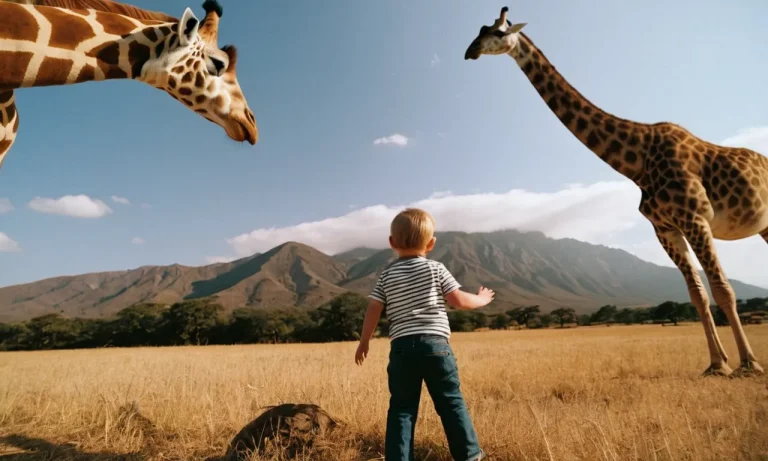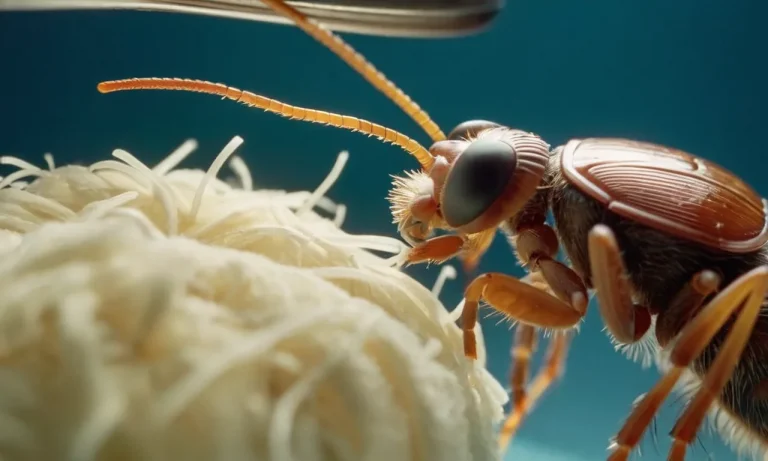Have you ever wondered what goes into making a stuffed animal and how much it really costs? With so many cute and cuddly plush toys on the market ranging from a few dollars to over $100, there’s clearly a wide range of production costs for these beloved companions.
If you’re short on time, here’s a quick answer to your question: The cost to make a stuffed animal can range from $2-5 for a basic plush made overseas with synthetic fabrics to $50+ for a higher-quality collectible plush made domestically with premium materials.
In this comprehensive guide, we’ll cover everything that factors into stuffed animal production costs including materials, manufacturing, transportation, wholesale pricing, and retail markups. You’ll learn what goes into pricing everything from bargain bin stuffed animals to luxury plush toys.
Sourcing Stuffed Animal Materials
Fabric Choices
When making a stuffed animal, the fabric is arguably the most important component. The type of fabric determines the softness, durability and overall quality of the final product. Popular fabric choices for stuffed animals include fleece, minky, cotton, velour, chenille, and faux fur.
Each fabric has advantages and disadvantages in terms of cost, texture, stretchability and ease of sewing.
Fleece and minky score high for softness. These cozy fabrics make ideal choices for plush toys and bedtime companions. However, they fray easily and can be tricky for novice sewers to work with. On the plus side, anti-pill fleece is now available to combat fuzziness from wear.
Quilting cotton offers a smooth, lightweight feel at an affordable price point. It comes in a rich array of child-friendly prints. Yet, cotton lacks stretch and can look wrinkly when stuffed. Adding foam, pellet or microfiber fills can yield a fuller shape.
For a super silky texture reminiscent of bunnies and bears, try velour or chenille. Just know that velvet-like fabrics show every pinprick and needle hole. Expert construction is a must!
Stuffing/Filler Materials
When selecting filling for plush toys, makers evaluate attributes like hypoallergenic, ease of use, washability, environmental impact, cost, density and longevity. Leading options include:
- Polyester fiberfill – The soft, fluffy gold standard that springs back after compression.
- Poly-pellets – Lightweight plastic pellets for maximum stuffing capacity.
- Polyester microfiber – Ultra-fine microfiber stuffing with smooth texture.
- Organic materials like wool, bamboo, or eco-friendly polymers.
For huggable heirlooms, most DIYers prefer polyester fiberfill. It fits nicely into curves and limbs without sagging overtime. Just shake well before use to separate and fluff the fibers.
Other Materials like Embellishments, Eyes, Nose
To bring handmade stuffed critters to life, makers embellish their fabric shells with plastic safety eyes, hand-stitched details like mouths and noses, plus decorative touches like bows, buttons and fabric trims. Glass doll eyes offer striking realism but pose safety risks for children under three.
Large retailers like Joann Fabric and Crafts and Hobby Lobby showcase huge inventories of pre-made stuffed animal parts like squeakers and jointed body frames.
For one-of-a-kind personality, many crafters hand sew facial features using embroidery floss. This allows total creative control over expressions. Adding personal touches like a character name or birthdate can make homemade plush toys even more special.
When sourcing materials, the only real limit is imagination!
Stuffed Animal Production Costs
Pattern Making and Design
The design and pattern creation process makes up a significant portion of the total cost to manufacture a stuffed animal. Skilled designers typically charge $50-100 per hour for their work conceptualizing the look of the stuffed toy, sketching concepts, and using computer software like Adobe Illustrator to produce the final printable patterns.
This includes multiple revisions and back-and-forth with the client. For a simple design with just a few pattern pieces, expect at least 10-20 hours of work. More complex designs with multiple patterns or posable joints can take 30+ hours to perfect.
There may also be additional one-time art fees charged by the factory for converting hand-drawn concepts into digital vector files or making adjustments so the design is suitable for production. These typically cost a few hundred dollars per design.
Onshore vs Offshore Manufacturing
Producing stuffed animals domestically in countries like the USA allows for greater quality control, faster turnaround times, and the ability to order smaller production runs. However, onshore production costs are significantly higher—often 5-10x the price of overseas manufacturing.
Minimum order quantities at US factories often start around 500-1,000 units vs just 100-500 units in China. And price per unit is driven by labor rates, which are vastly cheaper overseas. So while a 18″ plush bear may cost $25-35 produced domestically, overseas costs can drop as low as $5-8 per unit when ordering a few thousand units from Asian countries like China, Vietnam or Indonesia.
Factory Minimums and Volume
In addition to the higher per unit cost, most professional stuffed animal factories will charge a setup/sampling fee each time they need to prepare new machines and materials to start a production run. This can be $100-500+ per design, depending on complexity.
So ordering fewer units means this setup cost gets distributed over less volume, increasing overall cost per item. The production MOQs (minimum order quantity) prevent the per unit cost from becoming unreasonable for the factory. Thus, higher volumes generally mean lower per-item pricing.
| Production Volume | Typical Per Unit Cost |
| 100 units | $15-25 |
| 500 units | $10-15 |
| 1,000+ units | $5-10 |
Labor Costs Per Unit
When production is outsourced to countries with lower wages, labor makes up the majority of the per unit cost. A typical 18″ plush stuffed animal takes 15-20 minutes of total labor between cutting fabric, sewing, stuffing, and finishing. In China, factory worker rates range $2-5 per hour.
So the direct labor cost per unit ends up around $0.50-1.50. And since overseas shipping and duties usually add another $2-3 per piece, the total landed cost winds up near $5-8. Domestic US factories pay 10-15x higher hourly wages though, so similar direct labor rates per plush toy are $5-25, contributing to the much higher overall pricing.
Additional Expenses After Manufacturing
Inbound Shipping/Duty
Once your adorable stuffed animals roll off the production line, you’ll need to ship them to your warehouse or retail store. Container shipping from overseas factories can cost between $1,500-$8,000 depending on volume.
Don’t forget to account for import duties and taxes, which run 2.0%-6.4% for plush toys imported to the USA.
You’ll also need domestic freight shipping to move inventory between warehouses, to Amazon FBA, or to retail partners. Industry average rates are $2-$4 per mile. But shopping around for the best carrier prices can shave 25% off your freight spend.
We recommend getting quotes from multiple providers like UPS, FedEx, and regional trucking companies.
Warehousing/Storage
Once those fluffy animals arrive stateside, you’ll need warehouse space to store them, unless you sell exclusively through Amazon FBA. Average industrial warehouse rental rates range $3.50-$8.00 per square foot depending on the location. Be sure to account for costs like:
- Racking & shelving units
- Forklifts
- Warehouse labor for receiving, picking & packing orders
- Management software
- Security systems
Pro Tip: Consider starting out in co-warehousing spaces to save on overhead until order volumes grow. Monthly storage fees + fulfillment fees per order are usually cheaper than managing your own warehouse at low volumes.
Packaging
You’ll need cute packaging to delight customers receiving your plush pals. Custom printed poly bags, tissue paper, stickers, thank you cards – these little touches make a big impression!
| Poly mailers | $0.08 – $0.15 each |
| Tissue paper | $7.99 – 15.99 per pack of 100 sheets |
| Stickers | $6 per pack of 100 |
| Thank you cards | $25 per pack of 100 |
It’s smart to project 1.2x -1.5x higher sales volumes when ordering packaging supplies to have extras on hand. Running out of materials and stalling order fulfillment is bad for business!
Wholesale and Retail Pricing Markups
Common Industry Wholesale Pricing Formulas
When determining wholesale pricing for stuffed animals, manufacturers typically use a standard industry formula based on the product’s cost. This helps set reasonable profit margins. Common formulas include:
- Cost x 2: Simply doubles the production cost.
- Cost x 2.2: Allows for a slightly higher margin.
- Cost + 30% of cost: Accounts for operating expenses and profit.
For example, if a 12-inch plush bear costs $5 to produce, common wholesale prices would be $10, $11, or $6.50 using the respective industry formulas. Many stuffed animal suppliers offer tiered pricing depending on order quantities to incentivize higher volume purchases from retailers.
Retailer Markups for Profit Margins
When retailers purchase wholesale stuffed animals, they apply their own markup formula to determine the retail selling price that allows adequate profit margin. Common retail markup rates include:
| 100% markup | Doubles the wholesale cost |
| 150% markup | 2.5 times the wholesale cost |
| 200%-300% markup | 3-4 times the wholesale cost |
As an example, if a retailer purchases the 12-inch plush bear for $10 wholesale, common retail prices would be $20, $25, or $30-40 based on typical industry retail markups. Luxury retailers sometimes apply even higher markups.
Understanding common pricing formulas helps both manufacturers and retailers determine reasonable profits when bringing stuffed animals to market.
Conclusion
As you can see, there are many variables that go into determining the final cost and sales price of stuffed animals which leads to the wide range we see in stores. Higher quality materials, onshore production, lower manufacturing volumes, and larger profit margins result in a more expensive plush, while offshore factories, synthetic fabrics, mass production, and low markups enable bargain prices.
The next time you see cheap or luxury stuffed animals on shelves, you’ll better understand the full production and distribution cycle it took to get that fluffy friend into your hands!







